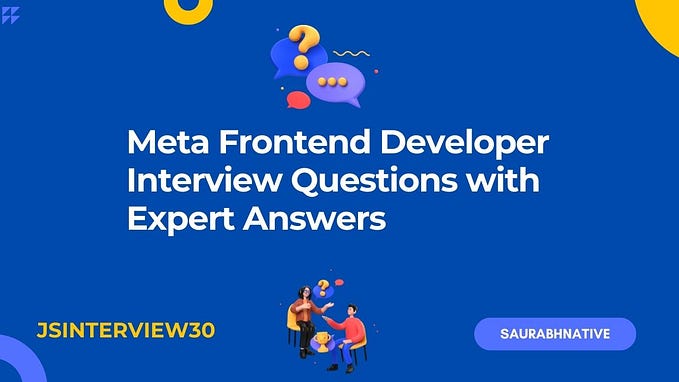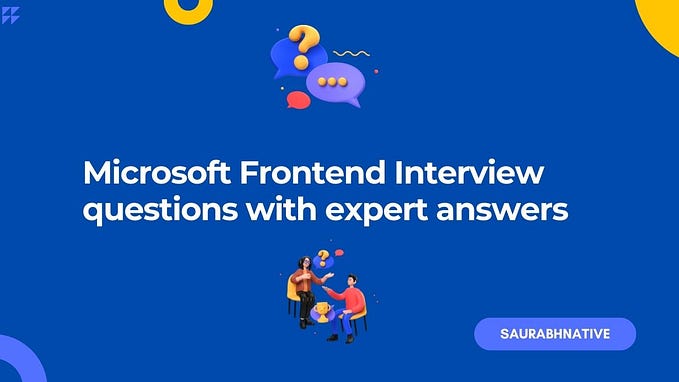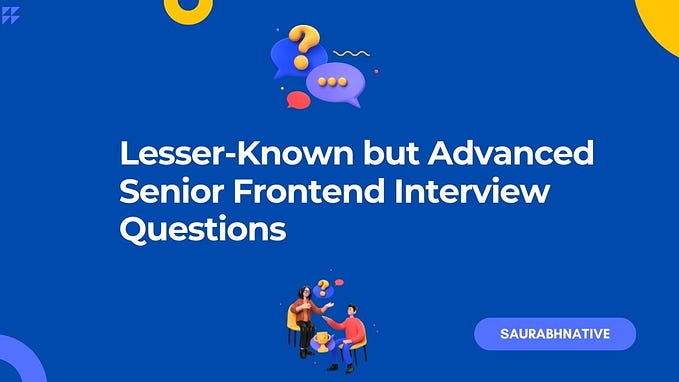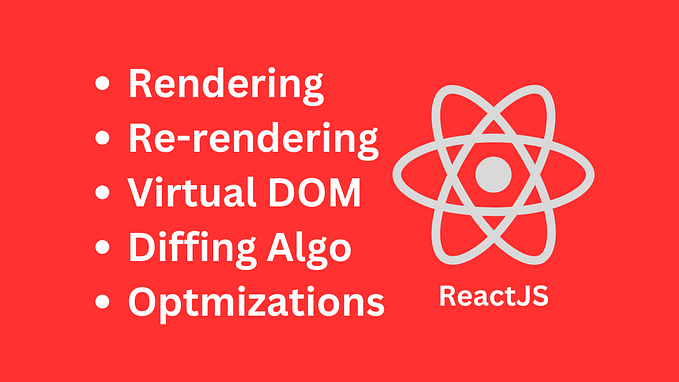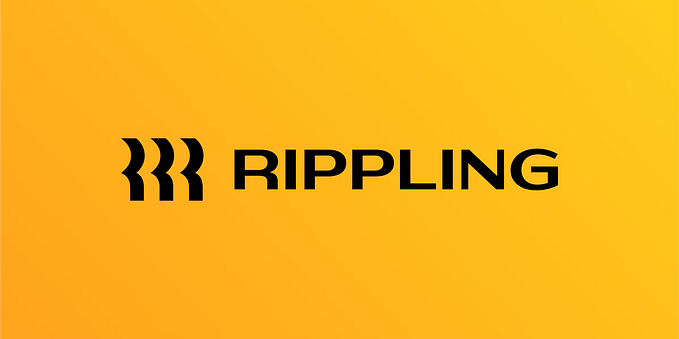Introducing JSInterview30: Master frontend interviews in 30 Days by covering top interview questions
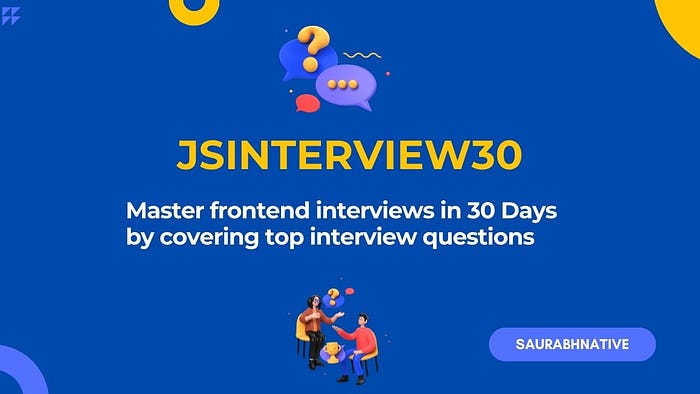
Introduction
Welcome to JSInterview30, a journey where we will cover interview questions from top tech companies in 30 days and prepare for front-end interviews along the way. Frontend interviews can be quite tricky. They often require not only a solid understanding of JavaScript and libraries like React.js but also the ability to apply that knowledge in practical, often tricky scenarios. Whether we’re aiming for roles at top product companies like Microsoft and Uber or client-focused organizations like TCS and IBM, the interview process is a test of both skill and preparation.
That’s where JSInterview30 comes in. I’ve curated a list of the most relevant and challenging JavaScript and React.js interview questions sourced from real-world experiences with companies like Intuit, Hackerrank, and other top product-based companies. This isn’t just a collection of questions — it’s a structured 30-day plan designed to help you build confidence and ace your next interview.
In this main article, I’ll introduce JSInterview30 and provide insights into how this resource can streamline your preparation. Each day focuses on a specific topic and a company, helping you cover the breadth and depth of frontend concepts one step at a time. Whether you’re a beginner or looking to level up, JSInterview30 offers something valuable for everyone.
Series Overview
1. Paytm Frontend Interview Question: Implement an LRU cache in JavaScript

An LRU (Least Recently Used) cache is a data structure that stores key-value pairs and removes the least recently used item when its capacity is reached. It ensures efficient memory utilization while maintaining quick access to frequently used data. The implementation commonly uses a hash map for O(1) lookups and a doubly linked list to track usage order.
An LRU cache is widely used in systems requiring efficient caching mechanisms, and its implementation is a frequent interview topic for frontend roles in companies like Paytm. Understanding the interplay between the hash map and the doubly linked list is key to mastering this concept. The article also includes a step-by-step code implementation, providing practical insights for candidates preparing for technical interviews.
Article link: Part 1
2. Atlassian Interview Question: Feature flag-based development
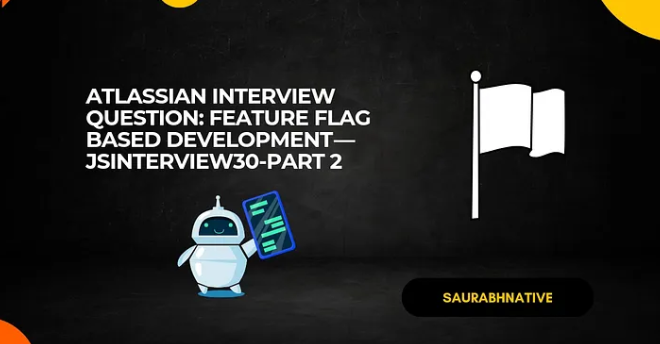
One of the challenging questions asked in the Frontend interview rounds of Atlassian is: How to create a feature flag component in React that consumes a feature’s API and conditionally renders UI based on the value of the feature
Feature flags are a powerful technique that allows developers to modify the behaviour of a software system without changing the code. They can be used for various purposes, such as testing new features, performing A/B experiments, or controlling access to premium functionality. In this article, we will learn to create a feature flag component in React.
Article link: Part 2
3. Finding the Height of a Binary Tree
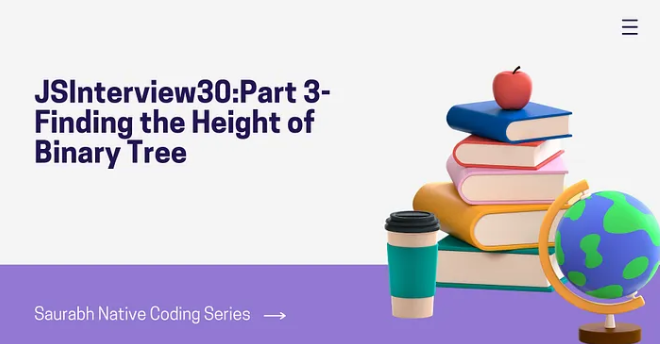
Binary trees are hierarchical data structures consisting of nodes, where each node has at most two children: left and right. They are widely used in computer science and are fundamental in representing hierarchical relationships. One common task when working with binary trees is finding the height of the tree, which is the longest path from the root node to a leaf node. In this article, we’ll explore how to write a JavaScript function to find the height of a binary tree.
Article Link: Part 3
4: Ola Interview Question: Finding Maximum Distance Between Nodes in a Binary Tree
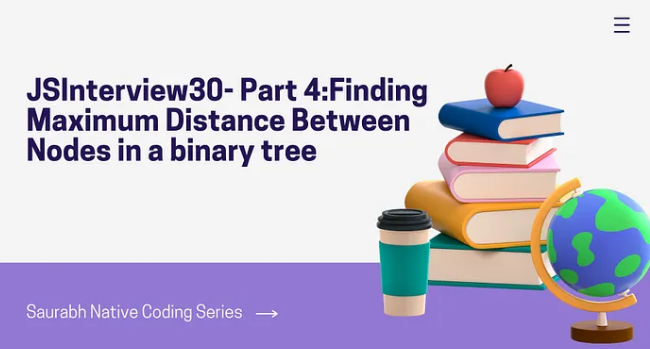
Binary trees are versatile data structures used in various computer science applications. One common problem when working with binary trees is finding the maximum distance between any two nodes. The maximum distance between nodes in a binary tree is the longest path between any two nodes in the tree.
This is a popular question asked in interview rounds of Ola. In this article, we’ll explore how to solve this problem using JavaScript.
Article Link: Part 4
5: Atlassian Interview Question: Implementing a Circuit Breaker in JavaScript
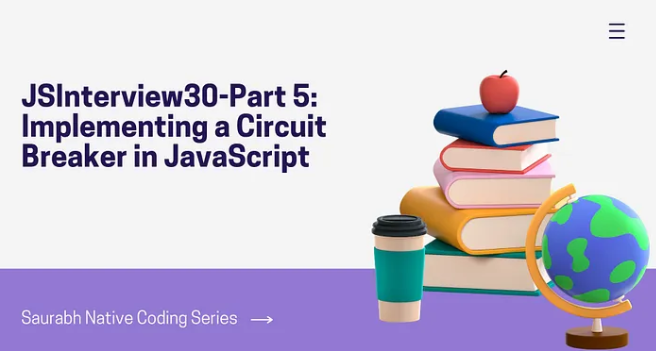
This is a popular question asked in interview rounds of Atlassian.
In the realm of distributed systems and microservices architecture, ensuring the resilience of our applications against failures is paramount. One powerful pattern for achieving this resilience is the implementation of a Circuit Breaker. Inspired by its namesake in electrical engineering, a Circuit Breaker in software serves to prevent cascading failures and improve the overall stability of our systems. In this article, we’ll explore how to implement a Circuit Breaker in JavaScript, enabling our applications to gracefully handle faults and recover from them.
Article Link: Part 5
6. Intuit Frontend Developer Interview Questions with answers
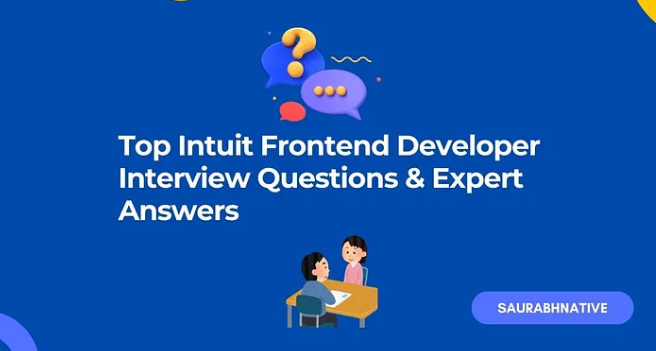
Intuit, a Fortune 500 company founded in 1983, is known for its financial software. In their Front-end Developer interviews, candidates often face challenging questions. Here are the questions we have covered in the article:
- Climbing Stairs Problem (LC Easy): This dynamic programming problem asks how many distinct ways one can climb a staircase with n steps, taking 1 or 2 steps at a time.
- Image Slider in React: Candidates are tasked with building a simple image slider from scratch using React, with features like next/previous buttons and auto-sliding images, without relying on third-party libraries.
- Truncate Text with CSS: This question requires candidates to truncate text using only CSS, testing their knowledge of styling techniques.
- Reverse String in JavaScript: Candidates must reverse a string in JavaScript without using built-in methods, demonstrating their understanding of basic algorithms.
These questions test problem-solving skills, coding proficiency, and familiarity with front-end development tools and techniques.
Article Link: Part 6
7. Uber Frontend Interview Questions with Expert Answers

Uber, the largest ridesharing company globally with over 150 million monthly active users and 6 million drivers, has a revenue of over 37 billion in 2023. In their front-end developer interviews, candidates are asked challenging questions. Here are two questions covered in the article:
- Finding the Next Larger Palindromic Number: A palindromic number remains the same when reversed (e.g., 1221). The task is to find the next largest palindromic number greater than a given integer.
- Run Dependent Async Tasks in Proper Sequence: This problem involves multiple async tasks (A, B, C, D, E). Tasks A, B, and C are independent, while task D depends on A and B, and task E depends on D and C. The challenge is to create a function or class to handle these dependencies and execute the tasks in the correct order.
These questions assess problem-solving, algorithmic skills, and understanding of asynchronous programming.
Article Link: Part 7
8. TCS Frontend Interview Questions with Expert Answers
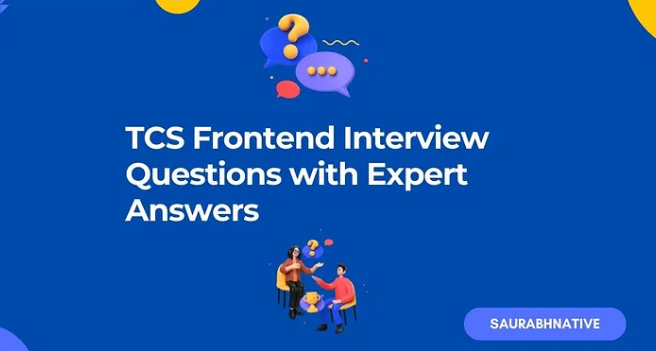
Tata Consultancy Services (TCS) is a leading Indian multinational technology company, specializing in IT services and consulting. With a market capitalization of around $200 billion, TCS ranks seventh on the Fortune India 500 list as of 2024.
Key interview questions include:
- Books Allocation Problem: Given an array of book pages and ‘m’ students, the task is to allocate books such that each student gets at least one book and the maximum number of pages assigned to a student is minimized.
- Find Duplicate Elements: Given an integer array, identify all duplicated elements.
- Middlewares: Middlewares are used to intercept and modify requests, log data, and validate inputs in both frontend (e.g., Redux) and backend (e.g., Node.js) libraries.
- Spread and Rest Operators: In JavaScript, both use the same syntax (
...), but the spread operator is used to expand elements, while the rest operator collects them into an array.
Article Link: Part 8
9. IBM Frontend Developer Interview Questions with Expert Answers
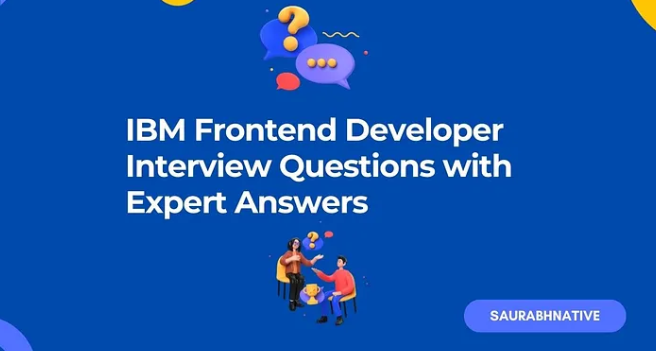
IBM is the largest industrial research organization globally, with 19 research facilities across a dozen countries. Here are some key interview questions:
- Interceptor and Auth Guards: An interceptor modifies outgoing requests or incoming responses and is useful for authentication validation, error handling, or logging. Auth guards restrict access to private routes based on authentication status.
- Event Propagation: Event propagation in frontend web development involves three stages: Capturing Phase (event moves down the DOM), Target Phase (event reaches the target element), and Bubbling Phase (event moves up the DOM).
- Observer Pattern: This behavioural design pattern allows a parent object (the Subject) to notify dependent objects (Observers) of any state changes.
- File-Type Data Validation: To validate file uploads, check the file type, ensure the file size is within limits, and verify the file is not empty before submission.
Article Link: Part 9
10. CARS24 Frontend Interview Questions with Expert Answers
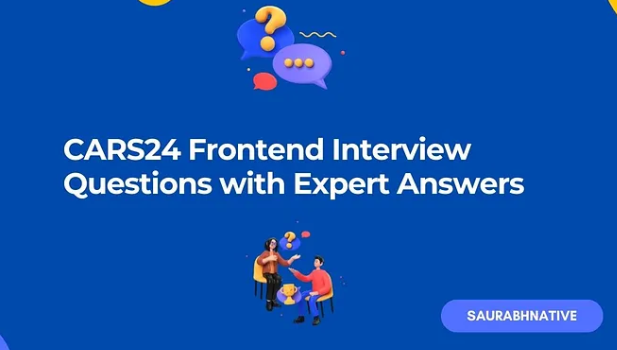
CARS24, an Indian multinational online marketplace for used cars, is headquartered in Gurgaon and is one of the top four organized players in the used car segment.
Key interview questions include:
- Polyfill for Debounce and Throttle: Write custom implementations for these essential functions to control the rate of function execution, commonly used in performance optimization.
- Merge Two Sorted Linked Lists: Given two sorted linked lists, merge them into a single sorted list and return the head of the final list.
Article Link: Part 10
11. HackerRank Frontend Interview questions with expert answers
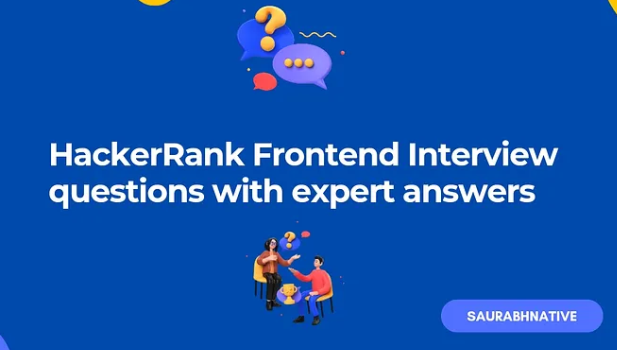
This article explores common front-end developer interview questions from HackerRank. Topics include:
- 5-Star Rating System: Designing a rating system with half-star, hover, and click functionality by breaking the problem into smaller steps.
- Matrix Zeroing: Setting entire matrix rows and columns to zero if any element is zero, requiring an efficient 2D matrix manipulation approach.
- Google Sheet Mockup: Implementing a basic grid layout using ReactJS, enabling row and column additions to simulate simple spreadsheet functionality.
Each question emphasizes problem-solving and systematic design.
Article Link: Part 11
12. Microsoft Frontend Interview questions with expert answers
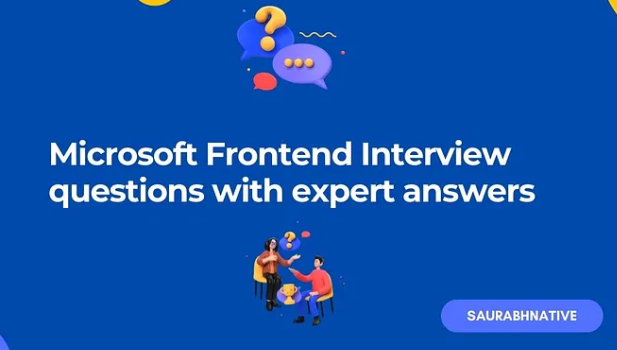
Microsoft, a tech giant among the Big Five (with Alphabet, Amazon, Apple, and Meta), hit a trillion-dollar market cap in April 2019. Here’s a glimpse of frontend interview questions at Microsoft:
- Search Page with Highlighted Queries: Build a search page using JavaScript, HTML, and CSS. It includes a top-bar input for queries, paginated search results, and highlights for the search terms in result previews (~500 characters).
- String Segmentation with Dictionary Words: Develop a solution to determine if a string can be split into space-separated dictionary words, using a recursive approach to output the valid word sequence.
Both tasks emphasize practical problem-solving and efficient implementation.
Article Link: Part 12
13. Meta Frontend Developer Interview Questions with Expert Answers

Meta ranks among the largest American IT companies, alongside other Big Five corporations. This article covers common interview questions at Meta like:
1. For a recursive description of DOM elements define a function that prepares actual DOM elements
We convert the above JSON object into actual DOM elements similar to how React converts its internal virtual DOM representation into actual DOM implementation by analyzing the node types.
2. Global Timeout Management
A global system for setTimeout, clearTimeout, and clearAllTimeouts is proposed. This system includes garbage collection to manage active timeouts efficiently.
3. DOM Tree Traversal
We learn how to traverse one DOM tree while synchronizing node visits to another tree of the same structure, ensuring accurate mapping.
4. What data structure is the DOM based on?
The DOM is based on a tree structure, where elements are arranged hierarchically, allowing efficient node manipulation and traversal.
Article Link: Part 13
14. Lesser-Known but Advanced Senior Frontend Interview Questions
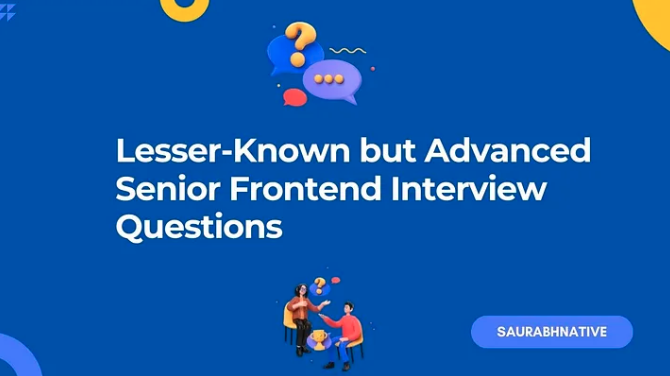
This article explores advanced front-end interview questions that are often overlooked but are crucial for senior developers. The topics covered include:
- What is a Render Tree?
The render tree is a structure that merges the DOM and CSSOM trees to determine what gets displayed on the screen. Non-visual elements like<head>ordisplay: noneelements are excluded. The browser uses this tree to compute the layout and paint the final UI. - What happens if we use async and defer in the same script tag?
The Async tag is used to load scripts and execute them as soon as they are downloaded, possibly blocking HTML parsing.
Defer tag is used to load scripts in parallel but executes only after HTML parsing is complete, maintaining order.
If both are present,asynctakes precedence, ignoringdefer3 - Explain the basics of CSP directives.
Content Security Policy (CSP) enhances web security by restricting content sources. Key directives include:default-src,script-src,frame-ancestors, form-action
Article Link: Part 14
15. Senior Fullstack Interview Prep: A deep dive into CORS
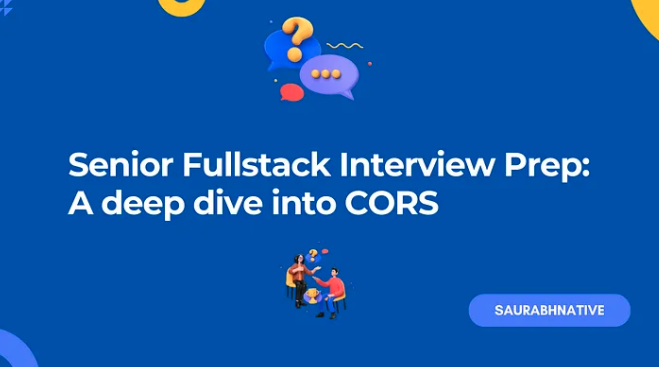
CORS (Cross-Origin Resource Sharing) is a security mechanism in browsers that controls resource requests from different origins. In this article, we explore key points like:
- Why CORS Exists: Prevents unauthorized data access and mitigates security risks.
- What are Cross-Origin Requests and how do they occur when frontend and backend differ in domain, protocol, or port.
- How to Setting Up CORS in Express.js
- Key CORS Parameters likeAccess-Control-Allow-Origin, Access-Control-Allow-Methods, Access-Control-Allow-Headers, Access-Control-Allow-Credentials
Article Link: Part 15
Benefits of JSInterview30
If you’re preparing for a front-end developer role, the JSInterview30 series is crafted to help you achieve your learning goals efficiently and confidently. Here are some key benefits of following this series:
- Structured Learning: Instead of feeling overwhelmed by the vastness of JavaScript and React.js, you’ll tackle one carefully selected interview question each day. This approach allows for steady progress without burnout.
- Real-World Relevance: The questions are inspired by actual interview processes at leading companies like Microsoft, Intuit, Uber, and IBM. This ensures you’re practising with content that aligns with what’s currently sought in the industry.
- Detailed Explanations: Each question comes with comprehensive answers and explanations, helping you not only understand the solution but also the underlying concepts. This approach deepens your knowledge and boosts your confidence.
Conclusion
Preparing for frontend interviews can be a daunting task, but with JSInterview30, you don’t have to do it alone. This series provides a step-by-step roadmap to help you master JavaScript and React.js interview questions in just 30 days.
Whether you’re a beginner looking to break into the industry or an experienced developer polishing your skills, the focused and practical nature of this series ensures that every day of preparation counts.
Learning should be a collaborative journey, and I hope JSInterview30 becomes a valuable part of your preparation toolkit. Remember, every question you tackle brings you one step closer to your dream role.
If you found this article series useful then show some appreciation for more such articles in your feed. Make sure to bookmark this article since you will keep coming back to this main article while learning from this series. Best of luck with your interview preparations and if you feel stuck at any point of time mention the point in the comments so that I can guide you accordingly. Have a nice day ahead 👋

